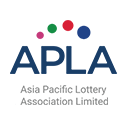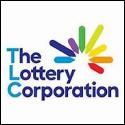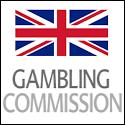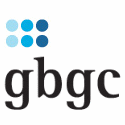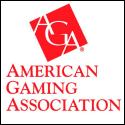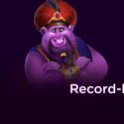ASA Research into the Exposure of Youngsters to Gambling Advertisements
In 2005 the Gambling Act made it legal for the first time for gambling brands to advertise on TV and radio, just like any other business. Previously, only the National Lottery and Bingo were allowed to broadcast advertising spots.
Since 2005, the nature of advertising has changed dramatically, notably with the rise of social media and in 2019, more attention was drawn to the issue of underage exposure to gambling adverts when a UK Gambling Commission report found that 69% of children had been exposed to gambling advertisements or sponsorships. Additionally, in 2017 GambleAware revealed that gambling companies spent more than £1.5bn on advertising and marketing, and around 80% of this was online.
There are already rules regarding how gambling brands can advertise; they must be socially responsible, not target those under 18 years of age, not encourage irresponsible gambling, and cannot be aired on either side of children’s TV programs or those that appeal to children.
UK operators also have their voluntary code of conduct for socially responsible advertising (and have implemented a whistle-to-whistle TV ad ban) through the Betting and Gaming Council, which goes further than current regulation and strengthens their commitment to protecting children and vulnerable persons from gambling advertisements.
However, while rules exist, children are still exposed to gambling adverts, which is the focus of the latest Advertising Standards Agency (ASA) research, the 100 Child Report.
The 100 Child Report: Aims and Findings
The study monitored 97 children aged 11-17 for one week, investigating:
-
“The ads children and young people were served online and on social media;
-
The number of alcohol, gambling and other age-restricted ads they were served; and
-
If those registered as over 18 on social media were more likely to be exposed to age-restricted ads.”
The main findings were:
-
Exposure to all online ads: In one week, the group was exposed 11,424 times to online ads via mobile devices.
-
Exposure to age-restricted ads: 3.8% (435) of these occasions were alcohol, gambling or other age-restricted ads.
-
False age data: based on the small sample, the study suggests that 93% of 11-17 year-olds in the UK have one or more social media accounts. There are over 5m. children this age in the UK; they account for an estimated 15m. Social media accounts, holding an average of 3 per person. The ASA estimates at least 11% of these accounts have incorrect age data, showing the owner as 18+.
-
Ad exposure on under-18 social media accounts: on 73 occasions (0.6% of the total), age-restricted ads were served by 30 advertisers to 10 children in the sample. This is in breach of targeting rules, and the ads were either served to accounts registered as 17 or younger or on a site where children make up 25% of the audience.
-
Ad exposure tho “over-18” registered accounts: There were 261 occasions (2.3%) of age-restricted ads served by 65 advertisers to 25 children through social media accounts registered to participants who had lied about their age, listing as 18+ or other online environments where adults made up more than 75% of the audience. This broke no ASA targeting rules.
-
TV vs online exposure: On average, each child was served 3.7 online gambling or alcohol ads. Of these, only 0.7 broke targeting rules; the other 3 did not. According to the ASA, children between 4-15 watch 3.0 TV gambling or alcohol ads weekly.
The research shows that over-18s are exposed to more age-restricted ads than those under 18. However, there were 73 occasions when children were exposed to gambling or alcohol-related advertisements that breached the ASA’s targeting rules.
In total, “children registered as 18+ were exposed to 47% of all the age-restricted ads in the study, two-thirds more than children registered as 17 and under”. Moreover, the results highlight a significant issue with children writing false ages on social media accounts without verification.
Child exposure: a renewed regulatory focus for 2022
The Young People and Gambling Report published in 2022 revealed a problem gambling rate of 0.9% in 11-16 year olds and 31% of children in the survey stated they had spent money gambling in the last 12 months. This included non-age restricted products, meaning the “vast majority was legal gambling” such as penny arcade machines. However, access to gambling ads and products is a problem for children who are accessing both.
CAP 2022 new rules
In April 2022, the Committee of Advertising Practice (CAP) published new rules to safeguard young people and vulnerable audiences. These banned gambling advertisers from promoting their brands using sports stars, celebrities and social media influencers that appeal to child audiences. The rules came into effect in October, one month before the start of the 2022 World Cup.
Marketing changes expected in the White Paper
Sports are popular with children of all ages, and sports teams and stakeholders expect sports sponsorship to be under the hammer following the recent release of the white paper for gambling reform, potentially bringing an end to the practice.
Gambling brands are shirt sponsors for nine Premier League teams (45%) and six Championship teams. According to the BGC, during the pandemic, “the English football league received £40m, horse racing received £350m, and snooker, darts and rugby league received more than £12.5m from the gambling industry”, showing a considerable reliance on this form of funding.
However, this view isn’t shared by the whole sports industry, and there is considerable support for a ban on gambling sponsorships. In April last year, 20 teams published a letter calling for a total betting company sponsorship ban, advocating they could secure “socially responsible sponsorship”. The letter, published by ITV, makes clear there is no opposition from football teams to an outright ban: “It seems clear to us that our fans, the players and the public, support our stance, with the only barrier seemingly being the financial impact on clubs,” the letter said.
What are operators doing?
The fact that the UK operators have created their code of conduct for advertising shows their commitment to socially responsible gambling and advertising. Still, there’s no doubt that the potential appeal gambling sponsorships and adverts can have on younger or underage audiences is a key topic, especially when many themes, stylised graphics or cartoon characters can appeal to young people.
The Marvel Slots are the perfect example; the license to exploit the superhero brand was granted initially to Playtech. However, when Walt Disney bought the franchise, it did not want to be associated with gambling and terminated the contract when it came up for renewal. In terms of the impact of operators’ efforts to reduce youngsters’ exposure to gambling adverts, the BGC has said its analysis showed that the whistle-to-whistle ad ban had reduced the number of children between 4 -17 seeing gambling adverts by 97%.
This article does not necessarily reflect the opinions of the editors or management of EconoTimes
SOURCE: EconoTimes.
















